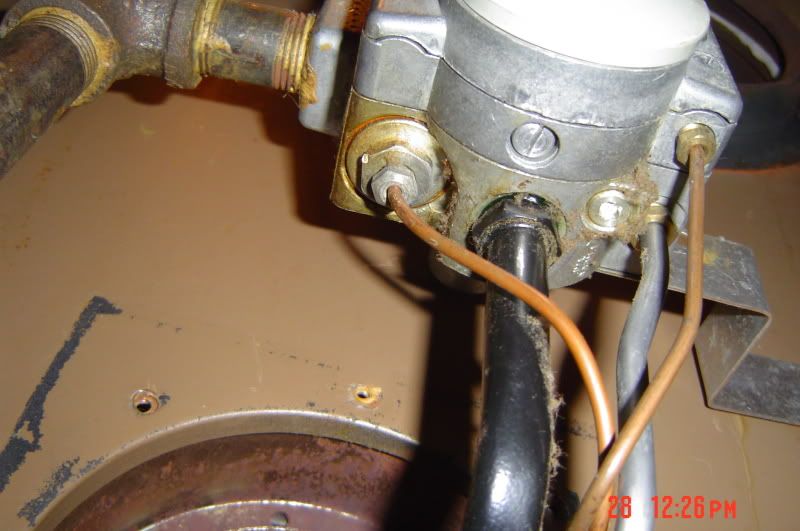OK, in the huntin' shack, which is a mobile home, the furnace has been acting up this year. It's a 1966 and the furnace is an Intertherm(LP).
For starters, why are there two(2), what appears to be, thermocouples?

I can see the one by the pilot but can't tell where the other one goes unless I remove the whole burner assy. But it's near the other one.
I can light the pilot and it remains lit and the main burner will light also and everything seems to work normal and it will reach the thermostat setting and then it'll shut off. On the next cycle, the main burner may or may not reignite. Sometimes it works normal but sometimes there's a small explosion which blows the pilot out. It's a little unnerving so I quit using it.
A new furnace is in store for next year but if it's something simple I may fix this one.
Anyone got a little direction here?
For starters, why are there two(2), what appears to be, thermocouples?

I can see the one by the pilot but can't tell where the other one goes unless I remove the whole burner assy. But it's near the other one.
I can light the pilot and it remains lit and the main burner will light also and everything seems to work normal and it will reach the thermostat setting and then it'll shut off. On the next cycle, the main burner may or may not reignite. Sometimes it works normal but sometimes there's a small explosion which blows the pilot out. It's a little unnerving so I quit using it.
A new furnace is in store for next year but if it's something simple I may fix this one.
Anyone got a little direction here?


